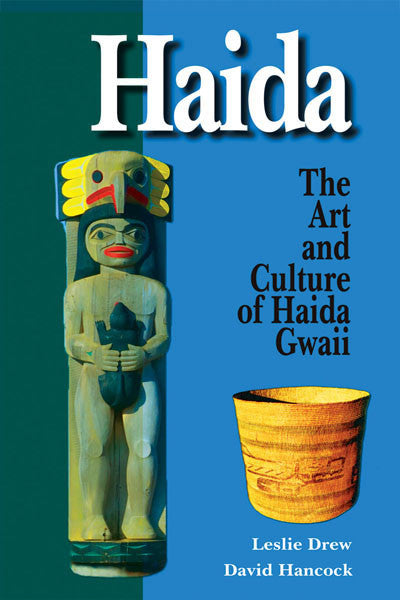

Haida (Revised)
Details
By: Drew, Leslie
ISBN: 978-0-88839-132-2
Binding: Trade Paper
Size: 8.5" X 5.5"
Pages: 96
Photos: 102
Illustrations: 23
Publication Date: 2009
Description
PR Highlights: New and Revised Edition!
PHOTO Highlights: Full color photos throughout.
Description: The Haida are islanders first and foremost--a people apart. They are the native inhabitants of the Queen Charlotte Islands, a long, tooth-shaped archipelago lying off the northern coast of British Columbia. Exactly how long they've lived there is not known, but they had probably occupied the chain of islands for thousands of years before the white man discovered them.
Experts at building and navigating sea-going canoes, the Haida ranged far from their Island stronghold, trading with, and sometimes raiding, the villages of their nearest neighbors--the Kwakiutl to the south, the Tsimshian across the often-stormy waters of Hecate Straight, and the Tlingit to the north in what is now part of Alaska. There are also Haida in Alaska, referred to as Kaigani Haida, descendants of group who migrated from the Queen Charlotte Islands to Dall Island and Prince of Wales Island before the coming of the white man. The major Kaigani center today is Hydaburg, Alaska.
Haida villages once existed all around the two main islands of the Charlottes--Graham Island in the north and Moresby Island in the south--and on smaller islands in the chain. Rotting beams of houses and the toppled forms of giant cedar totem poles propped by new trees of a reassertive forest mark the ruins of several of these villages, and bear silent testimony to the decimation of the Haida. These once thriving people were ravaged by disease and the effects of alcohol in the 1800s after the whites arrived. From a population estimated at nearly 7,000 in 1835 (perhaps one-tenth of the total native population of what is now British Columbia), the Haida of the Charlottes dwindled to a mere 800 by 1885 and remained low in numbers into this century. Today, the two centers of population are the villages of Haida, formerly called Old Masset, which has 1,000 people, and Skidgate, which has 400. Together, they make up nearly half the total population of the Charlottes. As well, an estimated 2,000 Haida reside elsewhere in British Columbia, many of them in Prince Rupert, Vancouver and Victoria. To all, the Queen Charlotte Islands are the homeland, the source of their distinctive culture, the inspiration for their arts.